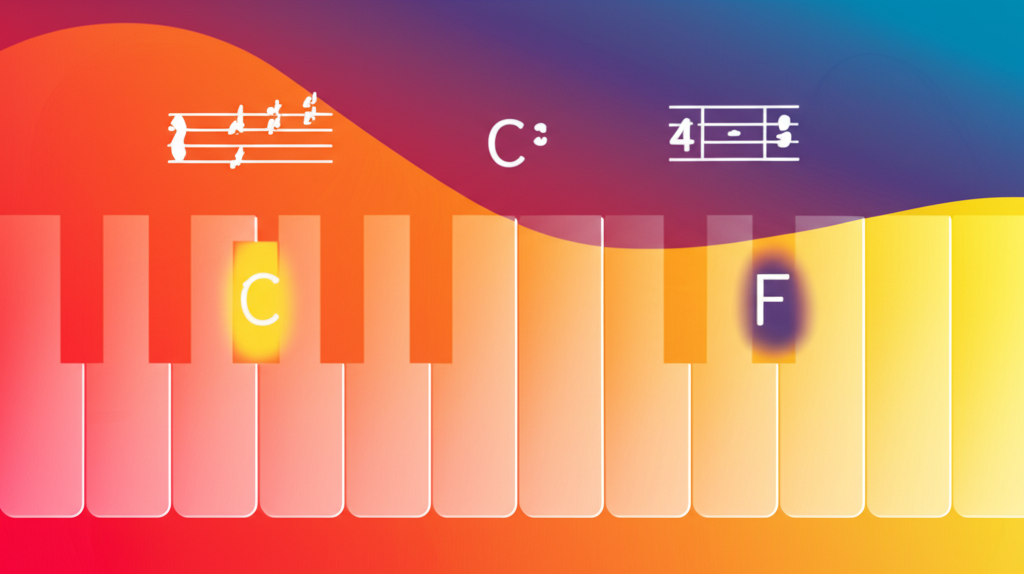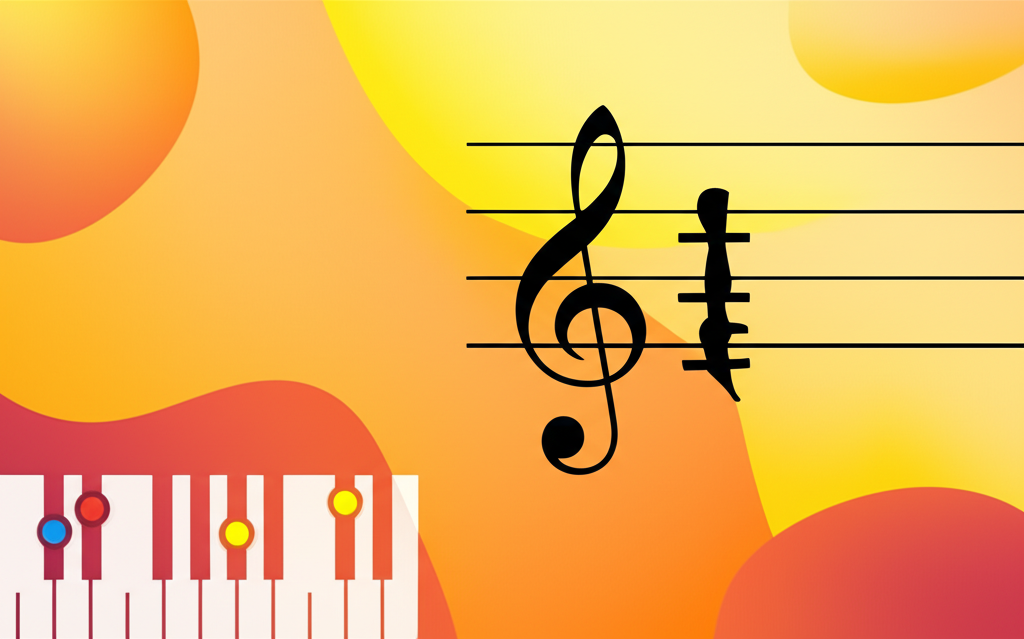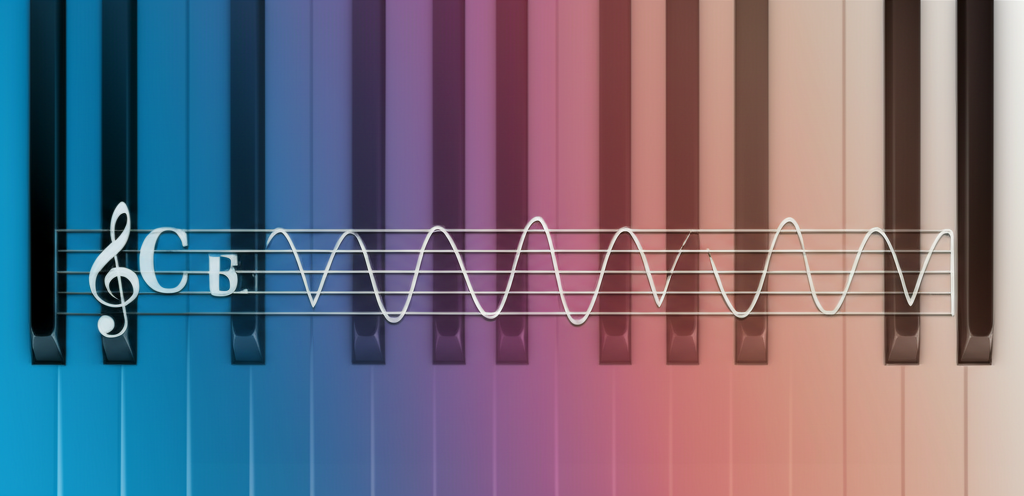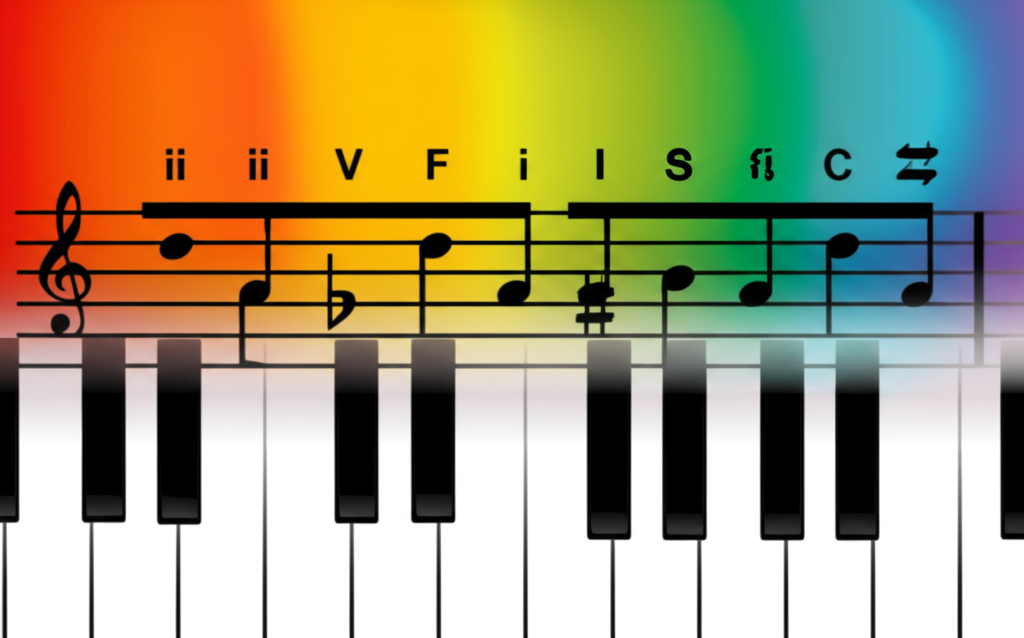
Perfect Fifth Interval: The Pillar of Musical Harmony

b4n1
June 14, 2025, 12:54 a.m.
Perfect Fifth Interval: The Pillar of Musical Harmony
Summary:
The perfect fifth interval, spanning seven semitones, is one of the most fundamental and consonant intervals in Western music. This essential interval forms the backbone of major and minor chords, creates the foundation for harmonic series, and has been recognized as a perfect consonance since ancient times.
Keywords:
Perfect fifth, interval, consonance, harmonic series, dominant, chord construction, circle of fifths, frequency ratio, acoustic harmony, medieval music.
Introduction:
The perfect fifth stands as one of the most important intervals in all of Western music theory and practice. Spanning exactly seven semitones (three and a half whole steps), this interval has been revered since ancient times for its remarkable acoustic properties and its fundamental role in creating harmony.
From the ancient Greek recognition of its mathematical purity to its central position in medieval organum, from its role in defining major and minor triads to its importance in the circle of fifths, the perfect fifth serves as a cornerstone of musical understanding across cultures and centuries.
Structure and Measurement:
A perfect fifth interval consists of:
- Distance: 7 semitones (half steps)
- Alternative measurement: 3.5 whole steps
- Frequency ratio: 3:2 in just intonation
- Cents: 702 cents in equal temperament
The perfect fifth is called "perfect" because it maintains the same quality in all keys, unlike major and minor intervals which change character depending on the key signature. This consistency makes it one of the most stable and recognizable intervals in music.
Examples of Perfect Fifths:
C to G (7 semitones)
D to A (7 semitones)
E to B (7 semitones)
F to C (7 semitones)
G to D (7 semitones)
Examples:
C to G Perfect Fifth:
Perfect Fifths in C Major Scale:
Perfect Fifth in Chord Context:
Acoustic Properties:
The perfect fifth's 3:2 frequency ratio makes it the second most consonant interval after the octave. This simple mathematical relationship creates several important acoustic phenomena:
- Harmonic series foundation: The perfect fifth appears as the relationship between the second and third harmonics
- Natural resonance: String instruments naturally resonate at perfect fifth intervals
- Beating minimal: The 3:2 ratio produces very slow beating, creating a stable sound
- Overtone alignment: Harmonics of both notes align closely, reinforcing the interval's consonance
Historical Significance:
The perfect fifth has played a crucial role throughout music history:
- Ancient Greece: Pythagoras discovered the 3:2 ratio and considered it one of the perfect consonances
- Medieval period: Used extensively in organum and early polyphony as a foundation interval
- Renaissance: Became fundamental to the development of triadic harmony
- Baroque period: Essential in establishing tonal centers and harmonic progressions
- Classical/Romantic: Central to sonata form and large-scale harmonic structures
- Modern era: Continues to be fundamental in all Western harmonic systems
Role in Chord Construction:
The perfect fifth is essential to virtually all Western chord types:
Triads:
In both major and minor triads, the perfect fifth between the root and fifth provides harmonic stability:
- C major: C - E - G (perfect fifth from C to G)
- C minor: C - E♭ - G (perfect fifth from C to G)
- Power chords: Just root and perfect fifth (C - G)
Extended Chords:
Even in complex jazz chords, the perfect fifth often provides harmonic foundation, though it may be omitted for voicing reasons.
Chord Examples with Perfect Fifths:
Notación musical:
The Circle of Fifths:
The perfect fifth is the organizing principle behind the circle of fifths, one of music theory's most important concepts:
- Key relationships: Moving by perfect fifths establishes the closest key relationships
- Scale construction: Major scales can be built by stacking perfect fifths
- Harmonic progressions: Root movements by fifth create the strongest harmonic motion
- Modulation patterns: Modulations by fifth are the most natural and common
Circle of Fifths Progression:
Notación musical:
Dominant Function:
The perfect fifth plays a crucial role in establishing dominant function:
- V-I progression: The strongest harmonic progression moves from the fifth degree to the first
- Dominant seventh: Contains a perfect fifth from root to fifth (G-D in G7)
- Leading tone resolution: The perfect fifth helps establish tonal center through resolution
- Cadential patterns: Most cadences rely on fifth relationships for their harmonic strength
Melodic Applications:
Perfect fifths appear prominently in melodies across many styles:
- "Twinkle, Twinkle, Little Star": Opens with a perfect fifth leap
- "Star Wars Theme": Features prominent perfect fifth intervals
- "Also Sprach Zarathustra": Opens with a powerful perfect fifth
- Folk melodies: Many traditional songs use perfect fifth leaps for strength and clarity
Melodic Perfect Fifth Examples:
Cultural Variations:
The perfect fifth appears across world music traditions:
- Chinese music: The perfect fifth is fundamental to traditional Chinese harmony
- Celtic music: Drone notes often create perfect fifth relationships
- Indian classical music: The perfect fifth (pancham) is considered one of the most important intervals
- African music: Many traditional scales and harmonies emphasize perfect fifth relationships
Instrumental Techniques:
String Instruments:
String instruments are often tuned in perfect fifths:
- Violin family: G-D-A-E tuning (all perfect fifths)
- Double bass: E-A-D-G tuning (perfect fourths, but inverted fifths)
- Mandolin: G-D-A-E pairs tuned in fifths
Wind Instruments:
Perfect fifths are prominent in brass instrument harmonics and woodwind technique.
Keyboard Instruments:
Piano and organ techniques often emphasize perfect fifth relationships in both hands.
Modern Applications:
Jazz:
Jazz musicians use perfect fifths in:
- Chord voicings and shell voicings
- Walking bass lines
- Bebop and post-bop harmony
- Modal jazz structures
Popular Music:
Rock, pop, and folk music rely heavily on perfect fifth relationships for harmonic stability and memorable progressions.
Film Music:
Perfect fifths are often used in film scores to create epic, powerful, or mystical atmospheres.
Ear Training and Recognition:
Developing perfect fifth recognition is crucial for musicians:
- Reference songs: "Twinkle, Twinkle" or "Star Wars Theme" for ascending fifths
- Harmonic context: Learn to hear fifths in chord progressions
- Scale relationships: Practice identifying fifths within scales
- Instrument tuning: Use the interval for tuning string instruments
Perfect Fifth Recognition Exercise:
Technical Considerations:
Tuning Systems:
Different tuning systems handle perfect fifths differently:
- Just intonation: Perfect 3:2 ratio
- Equal temperament: Slightly tempered (702 cents)
- Pythagorean tuning: Pure perfect fifths, impure thirds
- Well temperament: Varied fifth sizes for different keys
Parallel Fifths:
In traditional voice leading, parallel perfect fifths are avoided because they can weaken harmonic progression and voice independence.
Inversions and Relationships:
The inversion of a perfect fifth is a perfect fourth (5 semitones). Together, these intervals span exactly one octave and form a complementary relationship fundamental to Western harmony.
Perfect Fifth and Fourth Relationship:
Psychological and Aesthetic Effects:
The perfect fifth creates specific psychological responses:
- Stability: Provides a sense of harmonic security and resolution
- Power: Creates feelings of strength and authority
- Openness: Suggests space and expansiveness
- Naturalness: Sounds "right" due to its acoustic properties
Fun Facts:
- The perfect fifth is the first interval after the octave to appear in the harmonic series.
- Pythagoras reportedly discovered the 3:2 ratio by experimenting with string lengths.
- Many church bells are tuned to perfect fifth relationships.
- The perfect fifth between C and G was considered so important that medieval theorists called it the "diapente" (meaning "through five").
- String quartet instruments are all tuned in perfect fifths except for some bass instruments.
Common Mistakes and Misconceptions:
- Confusing with tritone: The augmented fourth (6 semitones) is often mistaken for a perfect fifth
- Assuming all fifths are perfect: The fifth from B to F is actually a diminished fifth (tritone)
- Neglecting context: Perfect fifths can sound empty or hollow in certain harmonic contexts
Practical Exercises:
For Composers:
Experiment with bass lines that move in perfect fifths, or try writing melodies that prominently feature fifth leaps.
For Performers:
Practice perfect fifth intervals on your instrument, paying attention to intonation and the interval's resonant qualities.
For Analysts:
Study how perfect fifths function in different musical styles and historical periods.
Conclusions:
The perfect fifth stands as one of music's most fundamental and versatile intervals. Its combination of acoustic purity, harmonic stability, and historical importance makes it essential knowledge for any serious student of music theory and practice.
From its role in defining basic chord structures to its importance in establishing key relationships, from its melodic power to its cultural universality, the perfect fifth continues to serve as a cornerstone of musical understanding across all genres and traditions.
Whether you're learning to tune an instrument, understanding chord progressions, or composing new music, mastering the perfect fifth will enhance your musical comprehension and creative abilities. Its timeless qualities ensure that it will remain central to musical expression for generations to come.
References:
Aldwell, E., Schachter, C., & Cadwallader, A. (2018). Harmony and Voice Leading (5th ed.). Cengage Learning.
Kostka, S., & Payne, D. (2018). Tonal Harmony: With an Introduction to Post-Tonal Music (8th ed.). McGraw-Hill Education.
Christensen, T. (2019). Stories of Tonality in the Age of François-Joseph Fétis. University of Chicago Press.
Partch, H. (1974). Genesis of a Music: An Account of a Creative Work, Its Roots, and Its Fulfillments. Da Capo Press.
Benward, B., & Saker, M. (2015). Music in Theory and Practice (9th ed.). McGraw-Hill Education.





















